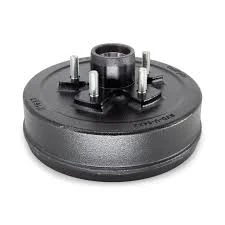Feb . 14, 2025 10:49
Sanawa dolan
drum brake system diagram
The drum brake system remains an integral component of many vehicles, offering unique advantages that make them preferable in certain scenarios over the more modern disc brakes. Understanding the intricacies of the drum brake system diagram can significantly enhance both consumer comprehension and mechanical proficiency. This article elucidates this vital automotive component, ensuring that you, as a reader, gain a clear understanding of its functionality and significance.
The self-adjuster mechanism is a pivotal part of most modern drum brake systems, tasked with keeping the brake shoes in the optimal position as they wear down over time. This mechanism ensures consistent brake pedal height and engagement by compensating for shoe wear, maintaining effective braking performance over the lifespan of the brake shoes. In recent years, drum brakes have evolved, integrating advanced materials and designs to enhance performance and durability. Some modern iterations feature lightweight composite materials for the drum, improving heat dissipation and reducing overall vehicle weight. Moreover, advances in friction materials have led to extended brake shoe life and more effective braking, even under demanding conditions. An often-underrated advantage of drum brakes is their ability to function as a parking brake more effectively than disc brakes in certain configurations. This dual functionality streamlines vehicle design, particularly in commercial vehicles where weight and space are critical considerations. For those tasked with maintaining a vehicle's braking system, understanding the drum brake system diagram is imperative. Regular inspection and maintenance of drum brakes are vital, focusing on the integrity of the friction material, the operation of the return springs, and the adjustment mechanism. Recognizing symptoms of wear, such as reduced braking efficiency or unusual noises, can preemptively address potential issues, ensuring safety and reliability. While drum brakes might be an older technology compared to disc brakes, their simplicity, durability, and effectiveness remain compelling features. They continue to be a viable option for various vehicle applications, especially where cost and robust performance are paramount considerations. In conclusion, the drum brake system diagram is not merely a schematic; it represents a cornerstone of automotive braking technology, embodying reliability and efficacy. Whether you're a vehicle owner, a mechanic, or an automotive engineer, a comprehensive understanding of this system will endow you with the expertise to appreciate, maintain, or even innovate upon this time-tested braking solution.


The self-adjuster mechanism is a pivotal part of most modern drum brake systems, tasked with keeping the brake shoes in the optimal position as they wear down over time. This mechanism ensures consistent brake pedal height and engagement by compensating for shoe wear, maintaining effective braking performance over the lifespan of the brake shoes. In recent years, drum brakes have evolved, integrating advanced materials and designs to enhance performance and durability. Some modern iterations feature lightweight composite materials for the drum, improving heat dissipation and reducing overall vehicle weight. Moreover, advances in friction materials have led to extended brake shoe life and more effective braking, even under demanding conditions. An often-underrated advantage of drum brakes is their ability to function as a parking brake more effectively than disc brakes in certain configurations. This dual functionality streamlines vehicle design, particularly in commercial vehicles where weight and space are critical considerations. For those tasked with maintaining a vehicle's braking system, understanding the drum brake system diagram is imperative. Regular inspection and maintenance of drum brakes are vital, focusing on the integrity of the friction material, the operation of the return springs, and the adjustment mechanism. Recognizing symptoms of wear, such as reduced braking efficiency or unusual noises, can preemptively address potential issues, ensuring safety and reliability. While drum brakes might be an older technology compared to disc brakes, their simplicity, durability, and effectiveness remain compelling features. They continue to be a viable option for various vehicle applications, especially where cost and robust performance are paramount considerations. In conclusion, the drum brake system diagram is not merely a schematic; it represents a cornerstone of automotive braking technology, embodying reliability and efficacy. Whether you're a vehicle owner, a mechanic, or an automotive engineer, a comprehensive understanding of this system will endow you with the expertise to appreciate, maintain, or even innovate upon this time-tested braking solution.
Öňki :
Iň soňky habarlar
-
Rear Drum Brakes Maintenance TipsHabarlarAug.04,2025
-
Key Components Affecting Brake Drum FunctionHabarlarAug.04,2025
-
Important Inspection for Truck Drum BrakeHabarlarAug.04,2025
-
How to Prepare for Changing Rear Drum BrakesHabarlarAug.04,2025
-
Essential Tools for Cleaning Drum Brakes ProperlyHabarlarAug.04,2025
-
Brake Drum Function GuideHabarlarAug.04,2025
-
Safety Features of Red Brake DrumsHabarlarAug.01,2025


